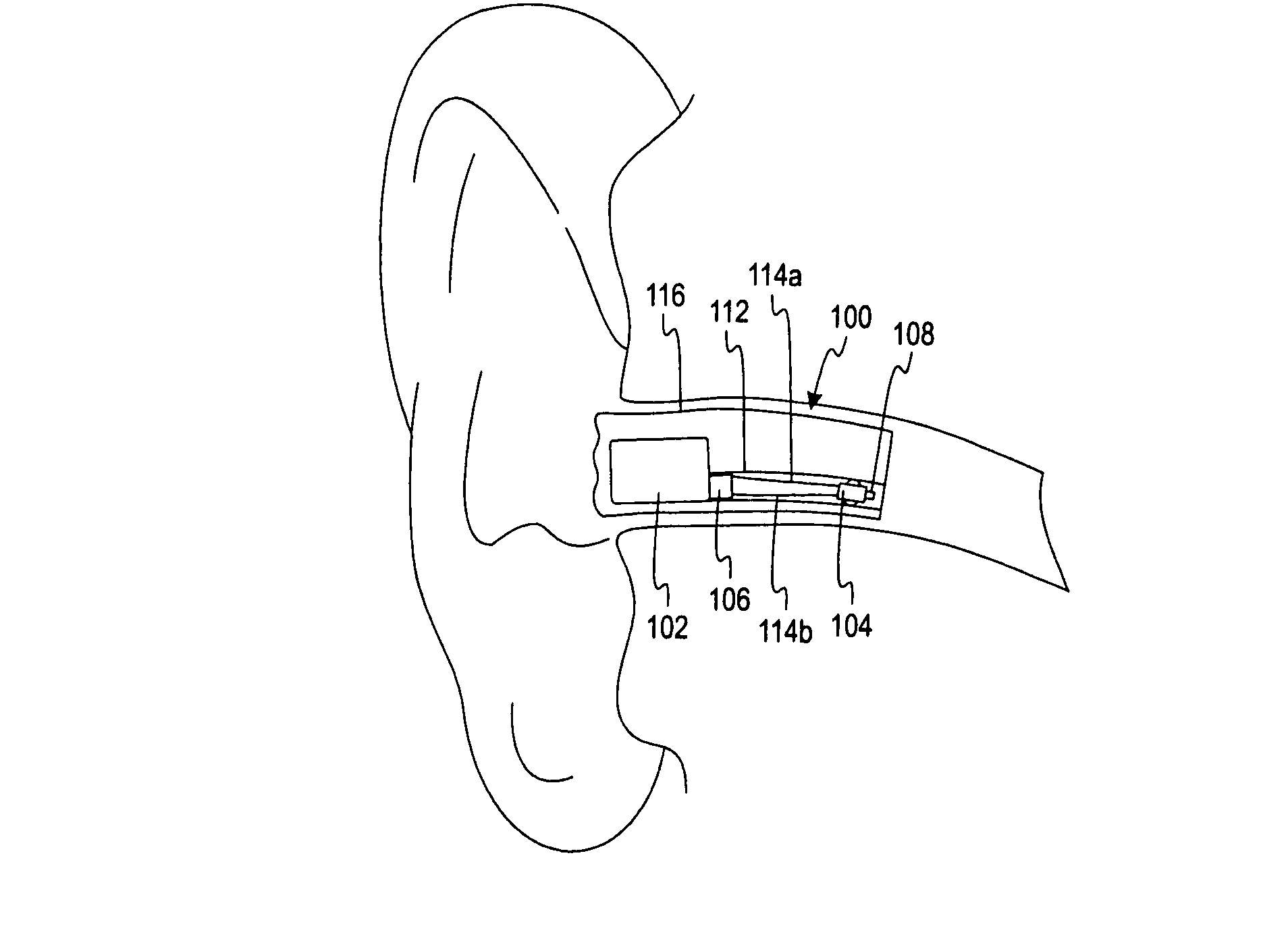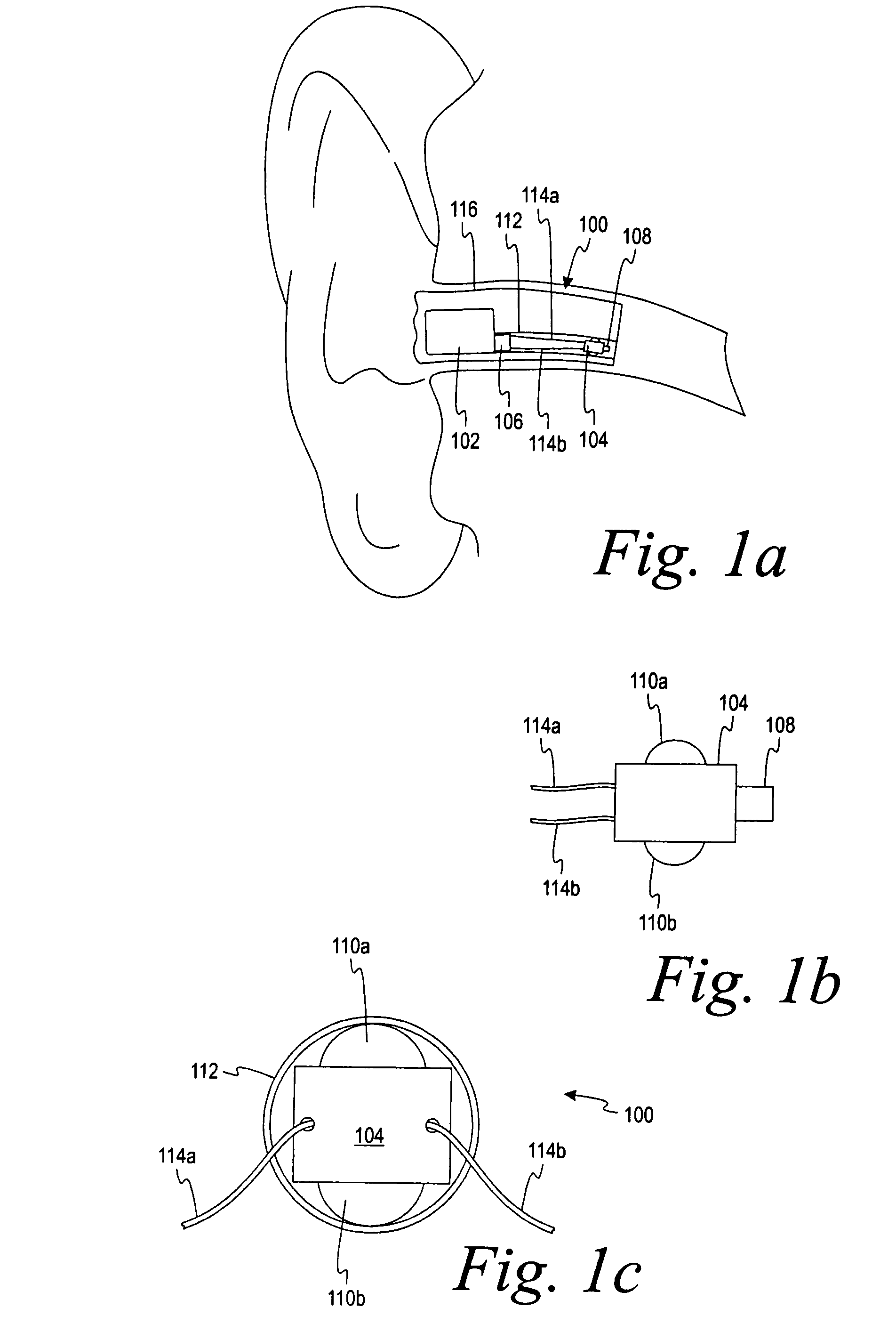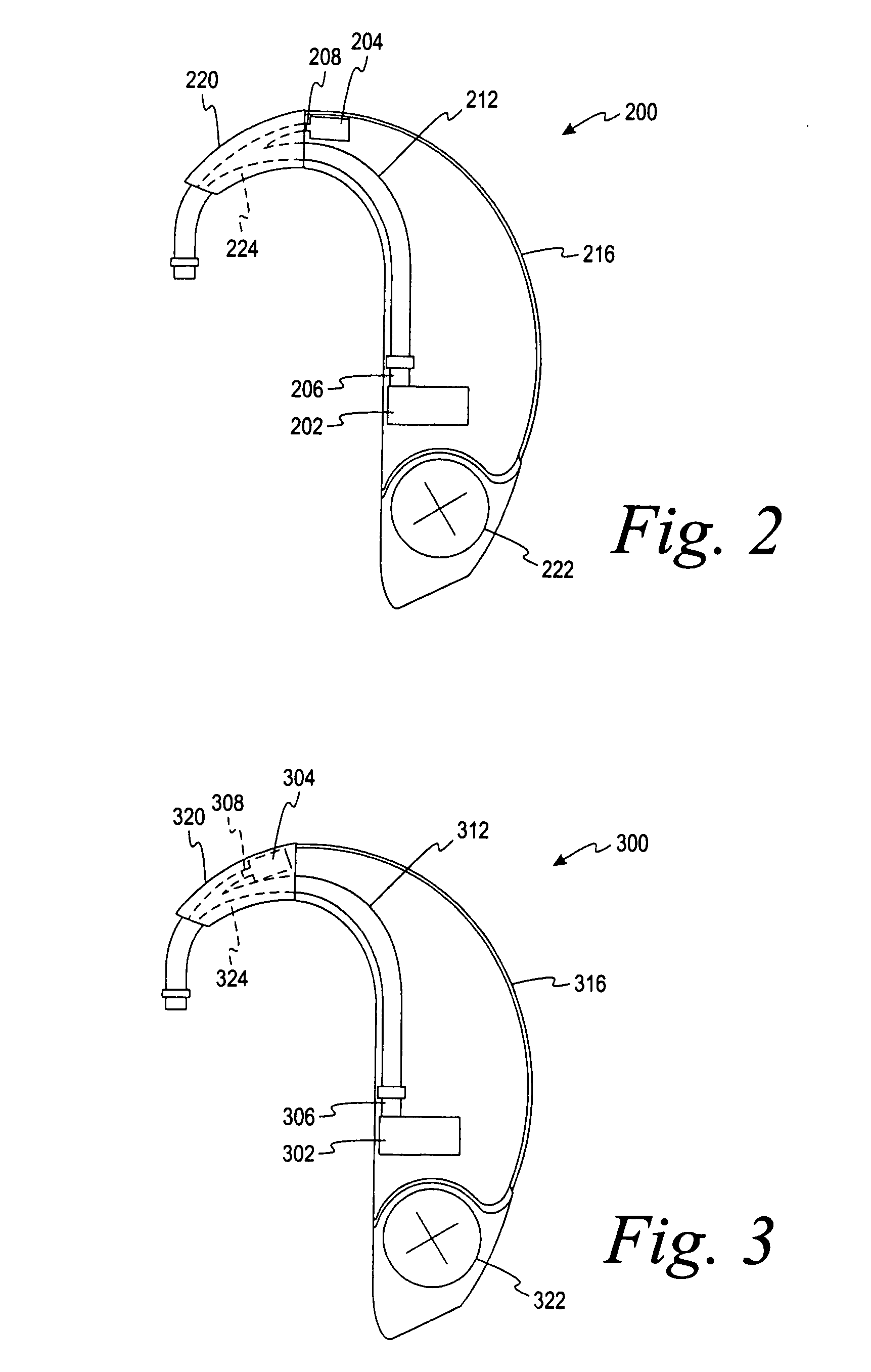Hearing aid having two receivers each amplifying a different frequency range
a technology of hearing aids and receivers, applied in the field of hearing aids, can solve the problems of limited bandwidth enhancement in general, particularly difficult to apply to behind-the-ear hearing aids,
- Summary
- Abstract
- Description
- Claims
- Application Information
AI Technical Summary
Benefits of technology
Problems solved by technology
Method used
Image
Examples
Embodiment Construction
[0025]There are at least three considerations in optimizing hearing aids in general: (1) its size should be as small as possible; (2) its power consumption should be as small as possible; and (3) its maximum sound pressure output should, as a general rule, be as high as possible. Another consideration is also becoming very important: (4) bandwidth should be as high as possible. The present invention achieves optimization of all four of the foregoing considerations by providing two receivers, each of which is separately optimized for different frequency ranges.
[0026]Though the addition of a second receiver may appear at first blush to increase overall size, in fact, each receiver can be optimized to a smaller size and can be distributed in the hearing aid in different areas or orientations, thereby saving overall space. By providing a separate receiver specially optimized at low frequencies, the resonance frequency is lowered, substantially increasing low frequency efficiency when co...
PUM
 Login to View More
Login to View More Abstract
Description
Claims
Application Information
 Login to View More
Login to View More - R&D
- Intellectual Property
- Life Sciences
- Materials
- Tech Scout
- Unparalleled Data Quality
- Higher Quality Content
- 60% Fewer Hallucinations
Browse by: Latest US Patents, China's latest patents, Technical Efficacy Thesaurus, Application Domain, Technology Topic, Popular Technical Reports.
© 2025 PatSnap. All rights reserved.Legal|Privacy policy|Modern Slavery Act Transparency Statement|Sitemap|About US| Contact US: help@patsnap.com



